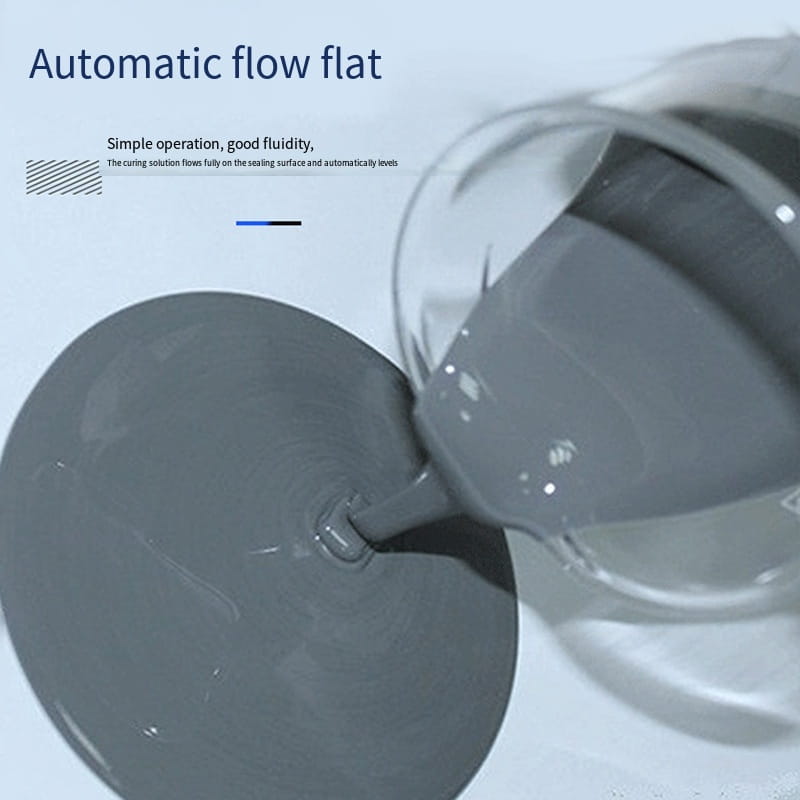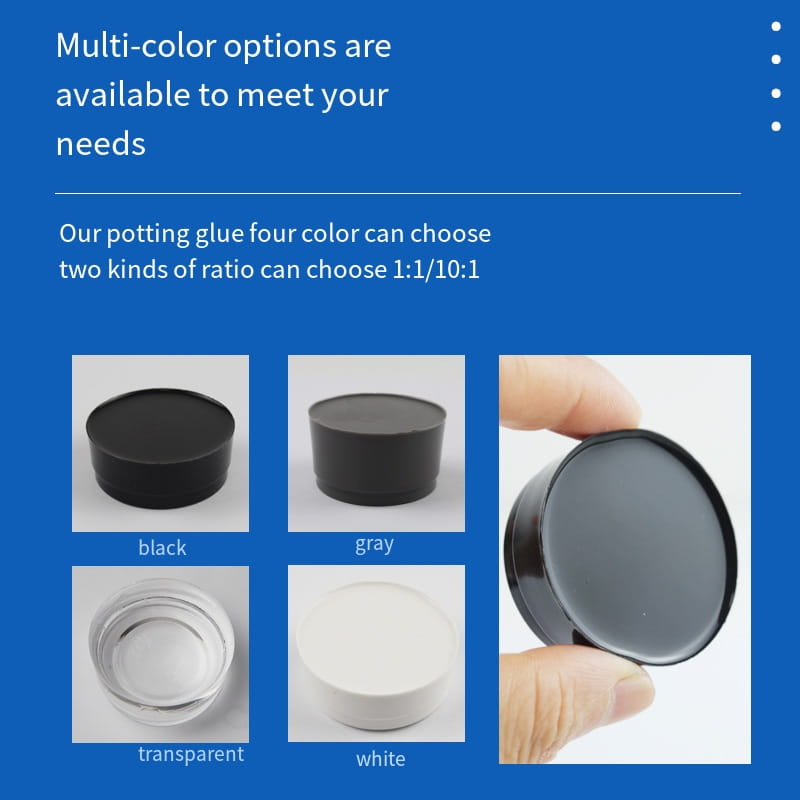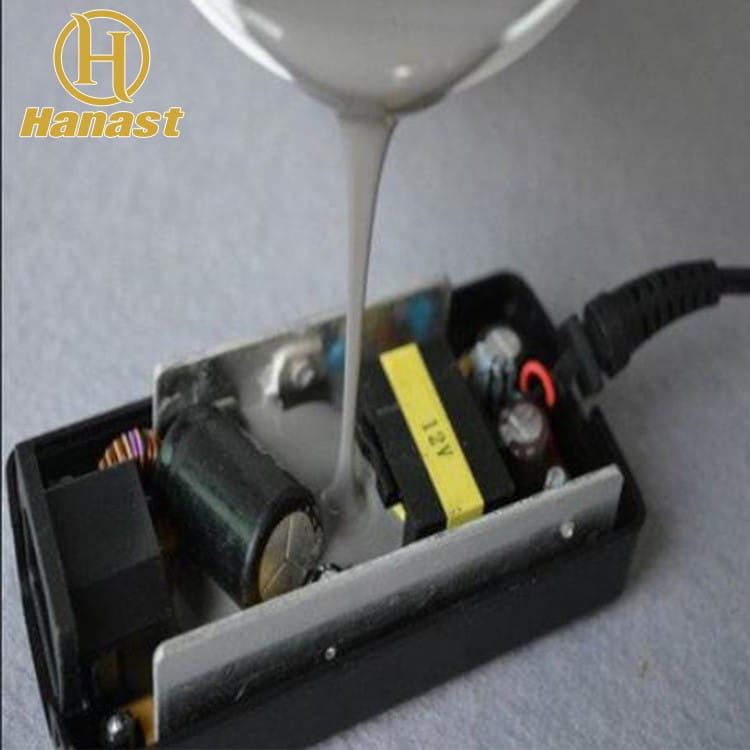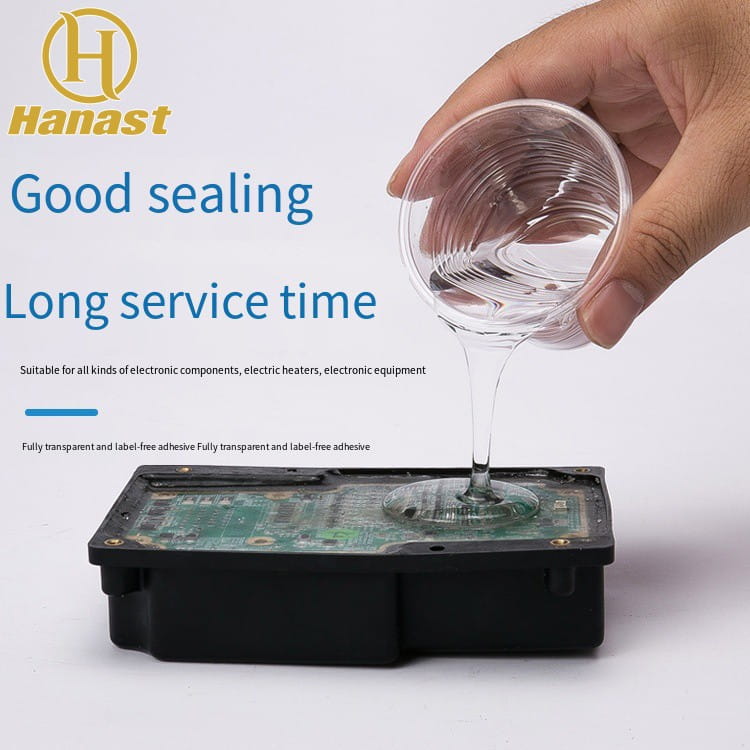How to remove the sealing adhesive? After reading it, you will know
 Oct 06,2023
Oct 06,2023

 Hanast
Hanast
silicone potting compound can be divided into various types based on their characteristics or uses. Common waterproof potting compound include epoxy resin potting compound, organic silicon potting compound, and polyurethane potting compound, and their characteristics and uses are different. So, if a component wants to increase or improve, what method should be used to remove the potting compound? Below, we will provide a detailed explanation of the cleaning methods for these three sealing adhesives.
Method for removing silicone sealant:
Silicone potting compound is environmentally friendly, elastic, soft, and has very stable chemical properties. Few solvents can dissolve it, and even when dissolved, the circuit board is greatly affected. Therefore, it can only be separated slowly with a sharp blade. There is a type of silicone sealant that is relatively soft after curing. To remove the cured silicone sealant, simply use a blade to make a cut around it and then remove the cured sealant.
Method for removing epoxy potting adhesive:
The epoxy sealing adhesive is too hard and difficult to remove. Acetone, alcohol, and acetic acid cannot truly clean epoxy resin potting adhesive. The epoxy resin sealing adhesive can be cleaned with alcohol before it hardens. After solidification and hardening, alcohol cannot be removed. After curing, the epoxy resin sealing adhesive cannot be removed at all. Once the components have problems, they can only be directly damaged and scrapped. Therefore, when choosing the sealing adhesive, it is necessary to consider this issue first, and in later applications, it is not necessary to remove the product.
Method for removing polyurethane sealing adhesive:
Polyurethane potting adhesive has excellent water resistance, heat resistance, cold resistance, acid and alkali resistance, high and low temperature impact resistance, moisture resistance, environmental protection, and high cost-effectiveness; Especially for the leakage problem of lithium-ion batteries, polyurethane sealing adhesive exhibits strong resistance to electrolyte corrosion. The methods for removing polyurethane sealing adhesive generally include:
1. Polyurethane sealing adhesive is alkali resistant, and if it still does not work well after use, it can be soaked in concentrated alkali or mechanically removed. Be careful not to completely soak it, as there is no mechanical strength left. Just remove it.
2. If it is already cross-linked and cannot be used as a solvent, soak it in ketones, esters, or other organic solvents. After a long time, it will swell and lose its strength. Use a tool to remove it.
If the three types of potting adhesive mentioned above have not yet solidified, they can be heated with a hair dryer and then scraped off with a scraper or other tool. The remaining potting adhesive can be wiped away with a cotton cloth dipped in a small amount of acetone.




 Home
Home




 What should be paid attention to when using electronic potting compound
What should be paid attention to when using electronic potting compound  You May Also Like
You May Also Like







 Tel
Tel
 Email
Email
 Address
Address












